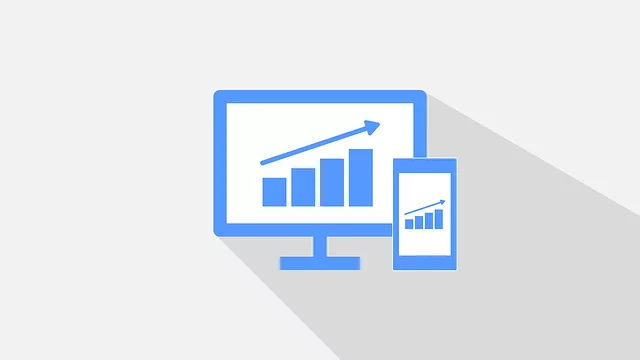In today's digital era, advanced data analytics revolutionizes Environmental Health and Safety (EHS) management. By leveraging risk assessment techniques, organizations can transform raw data into valuable insights for EHS program development and compliance. This involves analyzing historical incident reports, environmental data, and health records to identify patterns and trends, enabling proactive hazard forecasting. Predictive modeling empowers strategic decisions, resource optimization, and targeted mitigation plans, fostering a culture of continuous improvement. Visualizing environmental data through innovative tools simplifies complex information for stakeholders, enhancing communication and decision-making. However, ethical considerations and privacy protection are crucial when collecting and utilizing data, maintaining transparency and confidentiality while leveraging insights for strategic EHS compliance strategies.
Data analytics is transforming Environmental Health and Safety (EHS) programs, empowering organizations to make informed decisions and mitigate risks effectively. This article explores the multifaceted role of data in enhancing EHS management. From foundational understanding of EHS program development to advanced techniques like predictive modeling and risk assessment, we delve into strategies that streamline operations and improve compliance. We also examine ethical considerations, highlighting the delicate balance between data utilization and privacy protection within EHS initiatives.
- Understanding EHS Program Development: A Foundation for Data-Driven Decisions
- The Role of Data Analytics in Enhancing Environmental Health and Safety (EHS) Compliance Strategies
- Unlocking Hidden Insights: Risk Assessment Techniques in EHS Programs Using Advanced Analytics
- Streamlining Operations: How Data Analytics Can Improve EHS Program Efficiency
- Predictive Modeling for Proactive EHS Risk Management: A Case Study
- Visualizing Environmental Data: Tools and Techniques for Better EHS Communication
- Ethical Considerations and Privacy in Data Analytics for EHS Programs
Understanding EHS Program Development: A Foundation for Data-Driven Decisions
Understanding EHS Program Development forms the bedrock for implementing data-driven decisions within environmental, health, and safety (EHS) initiatives. Effective EHS program development involves a systematic approach to identify risks, set goals, and establish key performance indicators (KPIs). By integrating risk assessment techniques, organizations can proactively manage potential hazards, ensuring compliance with regulations and industry standards. This strategic foundation enables data analytics to play a pivotal role in optimizing EHS practices.
In the context of EHS compliance strategies, leveraging data analytics allows for continuous improvement and informed decision-making. Organizations can track and analyze key metrics related to environmental impact, worker safety, and regulatory adherence. This data-centric approach facilitates the identification of areas requiring enhancement, enables benchmarking against industry peers, and fosters a culture of safety and sustainability. Ultimately, it drives organizations toward more efficient and effective EHS program development, contributing to enhanced operational resilience and long-term success.
The Role of Data Analytics in Enhancing Environmental Health and Safety (EHS) Compliance Strategies
In today’s digital era, data analytics plays a pivotal role in enhancing Environmental Health and Safety (EHS) compliance strategies within program development. By leveraging advanced analytical tools, organizations can gain deep insights into their operational data, enabling them to identify potential risks and implement targeted mitigation measures. This proactive approach not only ensures adherence to regulatory standards but also fosters a culture of continuous improvement.
Risk assessment in EHS programs benefits immensely from data analytics as it allows for the quantification and prioritization of hazards. Through comprehensive data analysis, organizations can pinpoint high-risk areas, processes, or materials that require heightened attention. This enables more effective resource allocation, improved safety protocols, and better preparedness to address environmental and health-related concerns. Ultimately, enhanced EHS compliance strategies driven by data analytics contribute to a safer and more sustainable operational landscape.
Unlocking Hidden Insights: Risk Assessment Techniques in EHS Programs Using Advanced Analytics
In the realm of EHS (Environmental, Health, and Safety) program development, advanced analytics serves as a powerful tool to uncover hidden insights and drive strategic decision-making. By employing sophisticated risk assessment techniques, organizations can transform vast amounts of data into actionable knowledge, enhancing their ehs compliance strategies. This involves analyzing historical incident reports, environmental data, and employee health records to identify patterns and trends that might otherwise remain unseen.
Through data mining and predictive modeling, analytics enables the forecasting of potential risks and hazards, allowing for proactive measures. For instance, by correlating workplace injuries with specific job roles or exposure to certain chemicals, companies can implement targeted interventions to mitigate risks more effectively. This not only improves overall safety but also fosters a culture of continuous improvement within EHS program development.
Streamlining Operations: How Data Analytics Can Improve EHS Program Efficiency
Data analytics plays a pivotal role in streamlining operations within Environmental, Health, and Safety (EHS) programs. By leveraging robust data collection and sophisticated analysis techniques, organizations can gain valuable insights into their EHS performance. This enables them to identify areas of improvement, optimize resource allocation, and implement more effective compliance strategies. For instance, analyzing historical incident data can reveal recurring patterns, allowing for proactive risk assessment in EHS programs and the development of targeted mitigation plans.
Furthermore, data analytics enhances decision-making processes by providing actionable intelligence. It enables EHS managers to make evidence-based choices, ensuring that resources are directed towards high-impact areas. This not only improves overall program efficiency but also fosters a culture of continuous improvement. As organizations navigate the complexities of growing regulatory landscapes and evolving industry standards, leveraging data analytics becomes indispensable in maintaining competitive advantages and upholding the highest safety standards in EHS programs.
Predictive Modeling for Proactive EHS Risk Management: A Case Study
Predictive modeling is a powerful tool for proactive EHS (Environmental, Health, and Safety) risk management, enabling organizations to anticipate potential hazards before they occur. By analyzing historical data on incidents, environmental factors, and regulatory trends, these models can identify patterns and predict high-risk areas or scenarios. This approach allows for the development of more effective EHS program strategies, focusing resources where they are most needed.
Consider a case study of a manufacturing company using predictive modeling to enhance its EHS compliance strategies. Through data analytics, they identified that certain production lines and specific chemical compounds had higher-than-average incident rates. Using this insight, the company could implement targeted interventions, such as enhancing safety protocols for those particular processes and providing specialized training for employees handling the high-risk materials. Such proactive measures not only reduce the likelihood of future incidents but also contribute to a more robust overall EHS program development.
Visualizing Environmental Data: Tools and Techniques for Better EHS Communication
In the realm of EHS (Environmental, Health, and Safety) program development, visualizing environmental data is a powerful tool that enhances communication and decision-making. By employing innovative tools and techniques, organizations can transform complex data into intuitive visualizations, making it easier for stakeholders to understand and interpret critical information. This approach is particularly beneficial in risk assessment, as it allows for a comprehensive analysis of various factors contributing to potential hazards within EHS compliance strategies.
Data visualization facilitates the identification of trends, patterns, and outliers that might otherwise go unnoticed in raw data. Interactive graphs, charts, and maps can illustrate environmental impact over time, spatial distribution of risks, or the effectiveness of safety measures. Such visual representations empower EHS professionals to communicate complex insights effectively during meetings, presentations, or reporting, fostering a culture of transparency and data-driven decision-making across the organization.
Ethical Considerations and Privacy in Data Analytics for EHS Programs
As data analytics plays an increasingly integral role in EHS (Environmental, Health, and Safety) program development and compliance strategies, it’s crucial to address ethical considerations and privacy concerns. Organizations must ensure that data collection, processing, and utilization adhere to strict ethical guidelines, particularly when dealing with sensitive information related to employee health and environmental conditions. Transparency is key; employees should be informed about what data is being collected, how it will be used, and who has access to it.
Risk assessment in EHS programs must incorporate robust data analytics practices that protect individual privacy while leveraging insights for strategic decision-making. This involves implementing stringent security measures to safeguard data from unauthorized access or breaches. Additionally, organizations should establish clear protocols for anonymizing data when necessary, ensuring compliance with relevant regulations such as GDPR or industry-specific standards. By thoughtfully integrating ethical considerations into data analytics strategies, EHS programs can enhance their effectiveness while maintaining the highest levels of confidentiality and trust.


